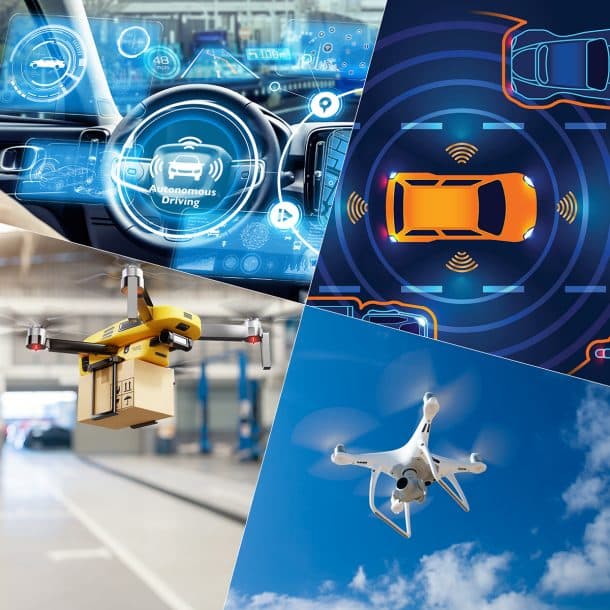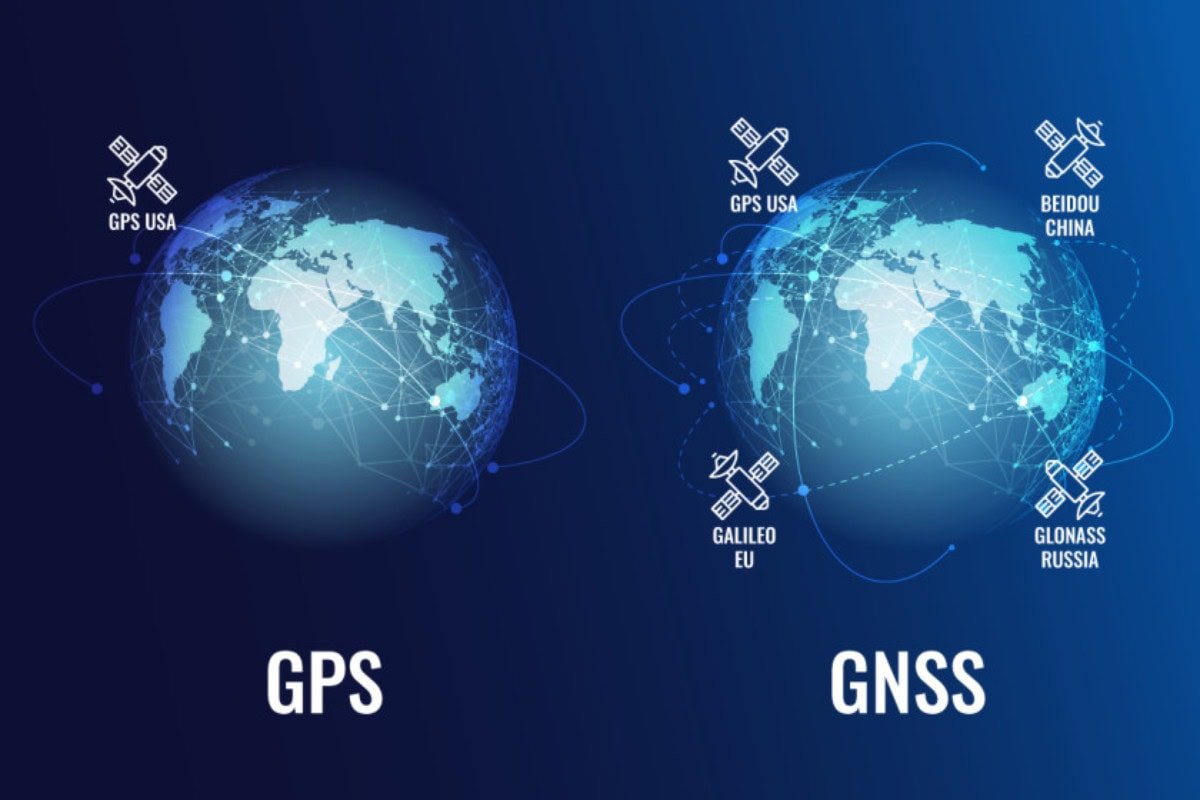Self-Driving Cars and Drones: Why GNSS is the ‘Navigational Brain’
A world where self-driving cars safely navigate our streets and autonomous drones handle deliveries is no longer science fiction. It’s a rapidly approaching reality. This digital revolution in transport promises unprecedented efficiency and safety. However, behind this seamless experience is an immense engineering challenge: how can these vehicles know their exact position, down to the millimeter, in every single condition imaginable? In the complex ecosystem of autonomous technologies, the Global Navigation Satellite System (GNSS) stands out as the core element. It serves as the indispensable ‘navigational brain’ of the entire operation. This article will explain why GNSS is so vital, what real-world challenges it faces, and the irreplaceable role of GNSS simulator calibration in ensuring safety and reliability for autonomous vehicles and drones.

Precision is the Foundation
The Autonomous Market
The booming growth of the autonomous vehicle and professional drone markets is driving the demand for increasingly stringent GNSS testing and calibration solutions to ensure safety and operational efficiency.

GNSS: More Than Just a Positioning System
Most people think of GNSS as just GPS on their phone. It tells them where to go. But for self-driving cars and drones, it provides two of the most critical pieces of information: precise position and precise timing.
- Precise Position: This is the foundational element that tells a vehicle its exact coordinates. Data from GNSS is combined with detailed 3D maps to create a virtual model of the environment. This lets a self-driving car know which lane it’s in. It also tells a drone its exact altitude. This data must be consistently accurate, even when a signal is weak.
- Precise Timing: This is often overlooked but is extremely important for a concept known as sensor fusion. GNSS provides a timing signal synchronized down to the nanosecond. The other sensors on an autonomous vehicle—like LiDAR, radar, and cameras—each collect their own data. They must combine this data in a single, coherent picture of the surroundings. GNSS acts like a conductor for an orchestra, ensuring every sensor works in perfect harmony and every piece of data is stamped with the correct time. Without this, the combined data would be meaningless.
Real-World Positioning Challenges
While GNSS is powerful, real-world factors can compromise its signal, creating risks for autonomous vehicles. These are scenarios engineers must overcome before the technology can be deployed on a large scale.
- “Urban Canyons” and Reflected Signals: In cities with tall buildings, satellite signals can get blocked or reflected. This creates a “multipath” effect, where signals arrive from different directions at different times. This degrades the signal-to-noise ratio and makes it difficult to pinpoint a precise location.
- Tunnels and Overpasses: In these situations, the GNSS signal is lost completely. The navigation system must switch to other technologies, like the Inertial Measurement Unit (IMU), to maintain positioning. The ability of the system to switch seamlessly is a major test.
- Extreme Weather Conditions: Heavy rain, snow, or dense clouds can scatter and weaken the satellite signal. This degrades accuracy. The system must be robust enough to operate in any weather, including conditions that reduce a human driver’s visibility.
- Jamming and Spoofing: GNSS signals are vulnerable to jamming (blocking the signal) or spoofing (broadcasting fake signals). These are serious security threats. A spoofer can trick a vehicle’s receiver into believing it is somewhere else. The system must be able to detect and reject these malicious signals.
The Revolutionary Solution: GNSS Simulators

Testing an autonomous vehicle in every real-world scenario is impossible. It’s too expensive, dangerous, and not repeatable. This is where GNSS simulators come in. A GNSS simulator is a device that creates perfect, artificial satellite signals in a lab environment.
- Safety and Cost-Effectiveness: Instead of risking expensive prototypes or human lives, engineers can simulate every scenario in a lab. This saves time, money, and most importantly, protects human lives. Engineers can conduct a wide range of tests, from a basic cold start (powering up the receiver from a completely off state) to complex dynamic motion profiles that include turns and accelerations.
- Perfect Repeatability: A GNSS simulator can perfectly recreate a specific scenario—like a signal dropout at a precise location—over and over again. This helps engineers find bugs and test software fixes with absolute precision.
- Total Control: The simulator gives engineers complete control over every variable. They can manipulate everything from the position of the virtual satellites to signal strength and interference. They can even simulate a replay attack by re-broadcasting a previously recorded signal.
The Decisive Importance of GNSS Simulator Calibration
All these complex tests are only meaningful if the GNSS simulator itself is perfectly calibrated. Just like a master ruler, if the ruler itself is wrong, every measurement you take will be useless.
GNSS simulator calibration ensures the simulated signals are absolutely accurate in terms of:
- Frequency and Power: The signals must have the exact characteristics of real satellite signals to avoid providing inaccurate data to the receiver.
- Timing: The simulator must maintain perfect timing synchronization. This is essential for the sensor fusion to work correctly.
- Virtual Satellite Position: The virtual satellites must be placed at the exact correct coordinates in the simulated space. Any deviation here will produce flawed results.
If a GNSS simulator is not properly calibrated, test results will be flawed. A critical flaw in an autonomous system could go undetected. This could lead to a catastrophic consequence in the real world. For example, a car’s navigation system might fail in a tunnel. Calibration helps engineers find these issues in the lab, before they can cause harm. Leading companies adhere to strict metrology standards to ensure their simulators are always in perfect working order.
Conclusion
GNSS is the indispensable ‘navigational brain’ of self-driving cars and drones. It provides the positioning and timing data that allows autonomous systems to function safely and accurately. But to ensure absolute safety, real-world testing isn’t enough. GNSS simulators provide a revolutionary solution. They allow engineers to test and refine systems in a controlled environment. Ultimately, GNSS simulator calibration is the core factor that guarantees the integrity of this entire testing process. It’s what allows us to trust the navigation systems in our cars and drones. This technology is key to a safer, more connected future for all of us.



